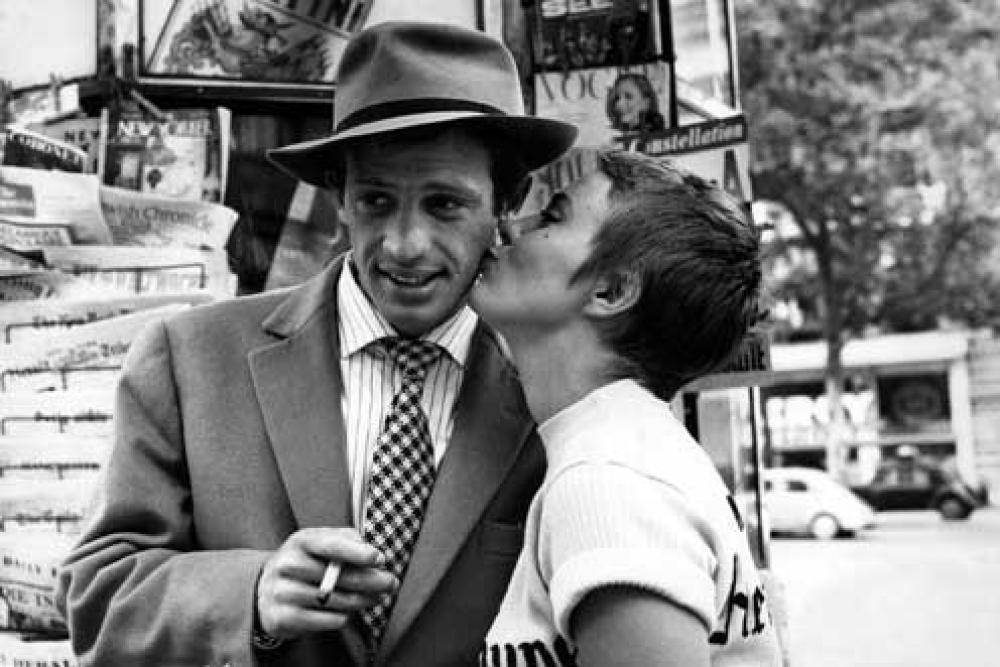Why the French New Wave Still Matters
Share with friends

If Hollywood and Neo-Realism had a baby, it would be Nouvelle Vague...
It’s a proven fact that things sound better in French. Take anything from love songs to Big Macs. The French New Wave, La Nouvelle Vague, is no different. But aside from just rolling off the tongue, this dynamic period in French filmmaking during the 1960s has created far reaching effects on the medium that are still important today.
For those who are less acquainted with this period here is a brief crash course on the movement:
La Nouvelle Vague first developed because a group of young film critics from the magazine Cahiers Du Cinema where sitting around bitching about Hollywood films. These young men included Francois Truffaut, Jean-Luc Godard, Claude Chabrol and Eric Rohmer.
They were proponents of the auteur theory, which proposes that the director is the driving force behind the artistic vision of a film. These critics were quick to hail Hollywood studio directors like Alfred Hitchcock, John Ford, Howard Hawks and Nicholas Ray as heroes. However, they also pulled inspiration from the Neo-Realism of post-war Europe. In essence, if Hollywood and Neo-Realism had a baby it would be La Nouvelle Vague. It proved to be an unconventional wild child, all for breaking the rules and forging a new path in the tradition of the 1960s.
The New Wave was not concerned about intricate plots or polished editing. There was no studio backing in their meager budgets and they took to the streets with cameras and did their own editing. They often cast their friends as actors, went without a script, or re-wrote on set. It was a very organic, free flowing kind of cinema.
Godard famously said, “All you need for a movie is a gun and a girl” and he made many films following this simple formula including À Bout de Souffle (1960), Bande à Part (1964) and Pierrot Le Fou (1965). The difference was that Godard’s films were far removed from the Hollywood gangster dramas he so admired. He paid homage to his predecessors and riffed off them like no one ever dared. He broke up his scenes with jump cuts partially out of necessity but also for arts sake. He tipped his hat to the likes of Humphrey Bogart, Sam Fuller and Fritz Lang, while also taking 1960s politics head on. His film Week-end (1967) is cited by critic Gary Indiana as, “a premonition of the political explosion of May ‘68 and its chaotic aftermath, a comedy of brilliant set pieces that cumulatively stage the collapse of Western civilization.”
To start off examining their influence it is necessary to look at the “American New Wave” which was instigated by Arthur Penn’s 1967 film Bonnie and Clyde. Interestingly, Francois Truffaut advised Warren Beatty to sign onto the project and it ultimately became one of the defining pieces of New Hollywood Cinema. It followed anti-heroes much like Godard had and it seemingly channeled some of his editing techniques, but perhaps most importantly was its anarchistic quality. It was breaking away from Classic Hollywood and blowing the lid off what had been acceptable cinema before. Next came Francis Ford Coppola and Martin Scorsese, auteurs in their own right, who helped define the 1970s by bringing their own personal vision and influences into their work from The Godfather (1972) to Mean Streets (1973).
In the modern age of filmmakers, Quentin Tarantino is probably the person with the most celebrated connections to Godard. His films like Reservoir Dogs (1992) and Pulp Fiction (1994) share a love of classic crime thrillers. There are also some obvious similarities, like purposeful nonlinear storylines and jump cuts. In fact Tarantino took a page out of Godard’s playbook in Bande à Part by staging a notable dance sequence in a restaurant. Godard did it first.
Director Steven Soderbergh acknowledges that, “Godard is a constant source of inspiration. Before I do anything, I go back and look at as many of his films as I can, as a reminder of what’s possible.” In films like Out of Sight (1998) and Traffic (2000), Soderbergh created crime films that did well in Hollywood, but you can see instances of the New Wave popping up within them. He uses freeze frames, reminiscent of the climactic shot in Les Quatre Cents Coups (1959), and handheld camera work that reflects the early look of Godard in films like À Bout de Souffle.
Wes Anderson is yet another auteur who has a distinctive style to his art and he often shows particular interest in certain themes. Much like Truffaut he often approaches young love, family and childhood in a tragic and nonetheless poignant manner. He goes so far as to mirror some of Truffaut’s shots from Les Quatre Cents Coups like the tracking shot through the classroom in Rushmore (1998). His more recent critically acclaimed work Moonrise Kingdom tackled young love and adult-children relations much in the same way the former’s film L’Argent de Poche (1976) did back in the ‘70s.
It is important to note that each of these filmmakers found their roots in independent film (ie. Reservoir Dogs, Sex, Lies, and Videotape, and Bottle Rocket). This matters because the indie film industry in a sense is the legacy of the French New Wave being lived out in America. The films have smaller budgets, shorter running times and yet they are often some of the most interesting films that the American public gets exposed to. They often vary between gritty dramas and quirky comedies that leave space for memorable performances. Their success is often based off of auteur directors like those previously mentioned, who set their work apart from high profile Hollywood blockbusters. These films are arguably the most thought-provoking films we get to see in the age of the sequel. My guess is that it’s because they do not get bogged by unoriginality and as a result they channel the true quality of The French New Wave.
However, as directors like Tarantino, Soderbergh, and Anderson have gained greater traction over years, they certainly are no longer small, independent filmmakers. That’s not necessarily a bad thing, because if Godard or Truffaut are any indication, they obviously were majorily influenced by Hollywood. As long as directors keep on experimenting and realizing their personal visions, I think the New Wave will keep on being pertinent. The minds behind this revolution elevated film to the level of any other form of artistic creativity. So as long as film never ceases being a method of visual expression, I think the French New Wave will never be irrelevant.




